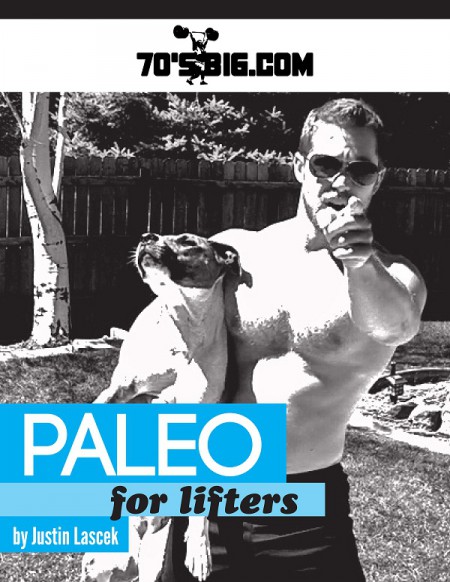In late 2007 I shifted my training focus from two years of “bodybuilding style stuff” back to an emphasis on performance. In early 2008 I started doing CrossFit exclusively for several months. As I was studying Kinesiology material in school, I also soaked up training and nutrition information at home. I read Loren Cordain’s “The Paleo Diet” and implemented it immediately. I quickly found that lots of protein and fat with controlled carbs was not only optimal for performance, but also helped me gain almost ten pounds of lean body mass in a month even though I was doing CrossFit. I was meticulous. In the beginning of 2009 I focused on strength training and put an emphasis on low quality, yet high calorie foods in high quantities. I ate like this for 18 months and gained weight and got stronger, but I always felt a bit sluggish. Since the middle of 2010, I’ve steadily experimented and progressed my diet into something that uses the Paleo diet as a base, but provides enough calories, protein, carbohydrates, and fat to fuel strength and conditioning training.
I constantly aim to improve my knowledge and how I teach nutrition on 70sBig.com has evolved over time. It’s possible to consume enough macronutrients and calories to recover from training and do so with quality foods that make our bodies more efficient and healthy; increased efficiency improves training recovery.
The result is that I maintain a sub-10% body fat while hovering between 210 and 215 pounds and can perform the following any day of the week: squat 450 for reps, press 225, deadlift 500, snatch 125kg, and clean and jerk 155kg. I don’t like humble-bragging, but these methods are effective not only for me, but lifters and trainees I work with.
Paleo for Lifters is an e-book I’ve been writing off and on for months and is about 26,000 words and 60 pages. It surpasses the length of Texas Method: Part 1 by several thousand words but isn’t as big as The Texas Method: Advanced, which sits at about 35,000 words. While the TM books were riddled with figures, graphs, and images, Paleo for Lifters is mostly just old fashioned text and explanation. Those who have read my books in the past know that I don’t put out crappy e-books, and this book is chock-full of useful information.
Table of Contents
Preface
1 — Introduction
2 — Nutrition Basics
3 — Why Paleo?
4 — Implementation
5 — Tips and Such
6 — A Final Word
The early chapters explain the basics of nutrition physiology as well as how much food a lifter, athlete, or trainee needs. Chapter 3 explains why the Paleolithic Diet is a good foundation for quality food and how it can help reduce systemic inflammation and therefore improve training recovery. Chapter 4 teaches readers how to use the Paleo diet to get enough quantities of protein, carbs, and fat and even how to tweak it based on body type and goal. Section topics include questionable and acceptable food choices (that differ from Paleo zealot recommendations), supplements, types of trainees, and a step-by-step guide to improving food quality. Chapter 5 ties up loose ends by covering topics like how to effectively use “cheat meals” (a goofy term that I use for consistency’s sake), how to read food labels, cooking tips, eating on a budget, eating while traveling, timing food intake with training, and how to tweak carbs intake, and information on sleep and hydration.
There are no recipes in this book, though there is a section that gives information on learning how to cook.


